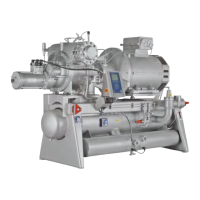How to troubleshoot high main filter pressure difference in SABROE Compressor?
- MmichaelmitchellSep 8, 2025
If the main filter pressure difference is too high in the SABROE Compressor, replace the filters if they are clogged with dirt. Allow the oil to warm up if it is too cold. Ensure that the service valve on the filter outlet is fully open.

